Detroit Tigers: Ranking All 17 of Al Avila’s 2016 Acquisitions

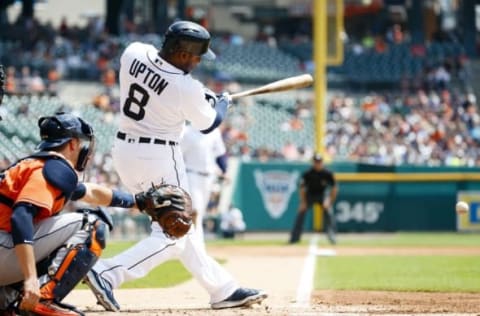
Detroit Tigers fans saw significant change this season after a disappointing 2015. In total, 17 players were brought in that played for the Tigers this season. Here they are, ranked from 17 to 1.
Detroit Tigers general manager Al Avila recently completed his first full season in charge of the team. After taking over for Dave Dombrowski down the stretch last season, Avila made a number of changes to the team.
While keeping the same core in place, Avila reshaped the rest of the roster, letting a number complimentary pieces leave through free agency and trades.
Rajai Davis, Tom Gorzelanny, Alfredo Simon, Alex Avila, Joe Nathan, Randy Wolf and Josh Zeid all reached free agency, while Guido Knudson was lost on waivers.
The new Detroit general manager then shipped out Ian Krol in the Cameron Maybin deal, while moving on from two relievers in Neftali Feliz and Al Alburquerque.
Kyle Lobstein, Bryan Holaday, Jefry Marte would all move on before Opening Day as well.
In their place, Avila signed Justin Upton and Jordan Zimmermann to substantial contracts. Mark Lowe, Mike Pelfrey, Mike Aviles and Jarrod Saltalamacchia were also brought in via free agency.
The general manager made use of the trade market in order to acquire a pair of bullpen arms in Francisco Rodriguez and Justin Wilson.
While he didn’t make many in-season moves, Avila did bring in a number of players in relatively minor transactions that contributed to the Major League team. Here’s a look at Avila’s top acquisitions from last season. Only players who made it to the Majors with Detroit are on the list.
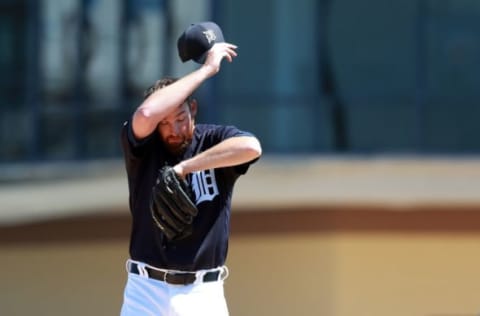
17-15. Bobby Wilson, Bobby Parnell and Alex Presley
17. Bobby Wilson
Acquired as part of the Bryan Holaday swap, Wilson was brought in to provide additional catcher depth. However, he played in just five games for the Tigers before being shipped back to Texas.
Over those five contests, the veteran hit .154 with a .354 OPS and a .163 wOBA. He posted a -9 wRC+ that ranked behind the likes of Justin Verlander, Jordan Zimmermann and Daniel Norris. Despite the poor numbers, the Tigers were able to acquire a potentially useful pitcher in Chad Bell (11-4, 3.29 in 98.1 innings at Triple-A) in exchange for the backstop.
16. Bobby Parnell
Bobby Parnell came to the Detroit Tigers with plenty of upside. From 2010 to 2013, the 32-year-old was one of baseball’s most effective relievers while pitching for the Mets. Over that span, Parnell pitched to a 2.78 FIP while filling a number of roles.
However, things didn’t go as well with the Tigers.
Despite pitching to a 3.95 ERA in Toledo, Parnell allowed seven hits, five walks and four runs in just 5.1 innings for Detroit. He was released in late August.
15. Alex Presley
With the exception of reserve catcher John Hicks, Alex Presley appeared in the fewest games of any position player employed by the Tigers during the 2016 campaign. The outfielder made just five at-bats in three games, registering a single. He appeared in both left and center field.
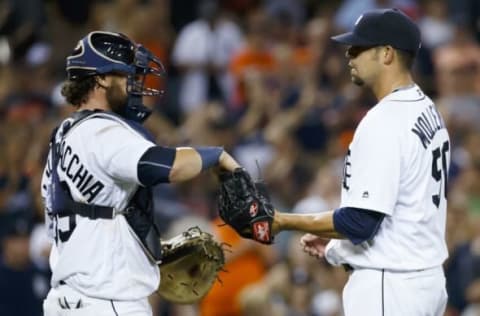
14-12. Logan Kensing, Dustin Molleken and John Hicks
14. Logan Kensing
Kensing initially made Detroit’s Opening Day roster after posting a 2.61 ERA and just one walk in 10.1 innings during Spring Training.
In three games with the Tigers, the former Marlin let in just one run. However, he did allow 10 base runners in 4.2 innings pitched. The 34-year-old spent the rest of the season in Triple-A, where he owned a 3.44 ERA in 49.2 innings pitched.
13. Dustin Molleken
Like Kensing, Molleken was signed to provide extra depth.
Also like Kensing, Molleken posted solid run-prevention numbers in a short with Detroit.
Over four appearances, the minor league veteran posted a 3.03 FIP. Unfortunately, like Kensing, he allowed too many base runners. Molleken was tagged for 13 hits per nine innings and 5.4 walks per nine frames.
12. John Hicks
Despite appearing in just one game, John Hicks ranks eleventh on this list. The catcher registered a double in two at-bats in September, but is mainly ranked this high because of what he could provide in the future.
The 27-year-old former fourth-round pick was claimed on waivers from Minnesota in late April and could be an intriguing long-term piece as James McCann’s backup.
Across three minor league stops in 2016, Hicks hit .310 with 47 RBI, 46 runs scored and 34 extra-base hits. He also added four stolen bases while throwing out 38% of would-be base stealers. He’s controllable for through 2021.

11. Mike Aviles
WAR: -1.4
OPS: .528
wRC+: 41
wOBA: .236
ISO: .060
It is probably safe to say that Mike Aviles didn’t have the most successful stint in the Motor City. Initially signed to provide some pop and defensive flexibility off the bench, there was reason to believe he could do just that based on past seasons.
The 35-year-old came into last season as a career .265 hitter. In eight seasons split between Kansas City, Boston and Cleveland, Aviles averaged 101 games plated, 45 runs scored, 36 RBI, 16 doubles, 10 stolen bases, seven home runs and two triples per campaign.
He finished fourth in the Rookie of the Year voting during his freshman campaign when he hit .325 for Kansas City with 10 home runs and 51 RBI. As recently as 2012, Aviles knocked in 60 runs while contributing 28 doubles, 14 stolen bases and 13 homeruns for Boston.
In other words, there was potential.
That potential was never reached as Aviles managed a .210 batting average and an abysmal -1.4 WAR in Detroit. The veteran’s 41 wRC+ barely came in ahead of a pair of pitchers in Daniel Norris (37) and Jordan Zimmermann (30).
Aviles was shipped to Atlanta late in the season along with catching prospect Kade Scivicque for Erick Aybar.
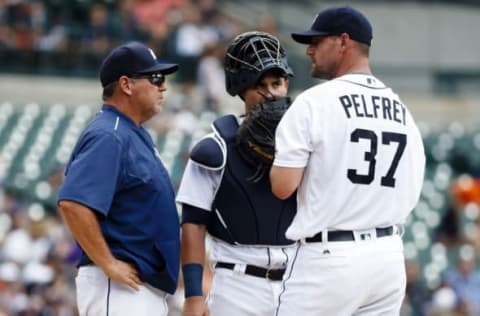
10. Mike Pelfrey
WAR: 0.4
WHIP: 1.73
SIERA: 5.25
K/9: 4.24
Like Aviles, Mike Pelfrey was signed with a specific purpose in mind. The veteran starter was brought in to provide rotation stability and to eat innings for Detroit.
Just as with Aviles, things didn’t go as planned.
Pelfrey simply allowed too many base runners.
Of all Major League starters with at least 100 innings pitched, the former Met posted the worst WHIP in the league. What’s more, he also ranked in the bottom 10 in SIERA, xFIP and FIP. To round it off, Pelfrey managed to strike out the fewest batters per nine innings at 4.24.
Even during starts where Pelfrey didn’t allow many runs, baserunners were an issue. During an early loss in Houston, the veteran allowed just one run—but walked six and gave up five hits. Additionally, in a late-July start versus the White Sox, Pelfrey allowed nine base runners in 5.1 innings pitched.
The starter was relegated to the bullpen later in the season.
With a year left on his contract, it will be interesting to see what the Tigers do with the veteran this offseason. Some rebuilding in need of innings could take a flier on him in an effort to rebuild his value ahead of the trade deadline.
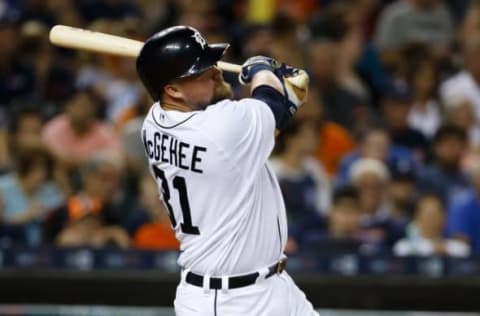
9. Casey McGehee
WAR: -0.5
OPS: .500
wRC+: 33
wOBA: .225
ISO: .011
Casey McGehee has put together some excellent Major League seasons in the past.
In 2010 as Milwaukee’s starting third baseman, the veteran hit .281 with 104 RBI and 62 extra-base hits. He also drove in 76 runs for Miami while hitting .287 in 2014.
He wasn’t able to find that kind of form in Detroit.
Brought in as a veteran depth piece in case of an injury to Nick Castellanos or Miguel Cabrera, McGehee was called up when Castellanos went down in early August.
The early returns were positive, as the third baseman hit .324 in his first eight games. Despite just one extra-base hits and a singular RBI, the former Brewer was at least getting on base.
Over the course of the rest of the season, McGehee would hit just .175. Of course, this was partly because of a .213 BABIP, but the infielder managed a 33 wRC+ number, which ranked behind the likes of Aviles, Anthony Gose and Daniel Norris.
McGehee would eventually lose playing time to both Erick Aybar and JaCoby Jones down the stretch. His -0.5 WAR was the second-lowest number on the team. The veteran’s ISO was a mere .011.
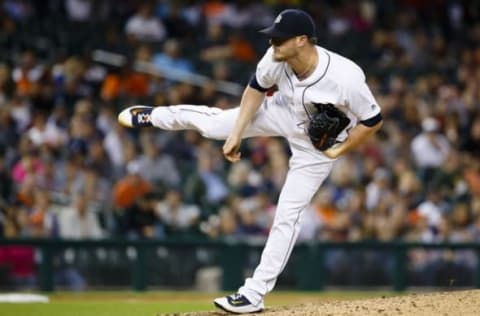
8. Mark Lowe
WAR: -0.4
WHIP: 1.58
SIERA: 4.07
K/9: 8.94
Like many on this list, Lowe didn’t exactly preform at a lights-out level.
Coming off a 2015 campaign that saw the veteran reliever post a 1.96 ERA and a 2.57 FIP split between Seattle and Toronto, Lowe couldn’t quite put it all together in Detroit.
He initially got off to a solid start, pitching to a 2.79 ERA in his first 10 appearances.
Then a 19-game stretch hit where Lowe was tagged for 30 hits, 26 runs (all earned), nine home runs and nine walks in 15.1 innings. That stretch drove the reliever’s ERA up to 10.44, and he spent the rest of the season trying to lower that number.
In his final 25 appearance’s, Lowe pitched to a 3.70 ERA while striking out 28 in 24.1 innings pitched. At this point, he’d been relegated to working in blowouts, but the rebound was positive nonetheless.
Similar to Pelfrey, Lowe has a year left on his contract, so it will be interesting to see how the Detroit Tigers move forward with him. They could conceivably deal him to clear salary space. A rebuilding club looking to help his value would make sense.
If he stays in Detroit, he’ll look to bounce back following a struggle of a season. His 4.07 SIERA and his numbers down the stretch prove that he can pitch effectively when given the chance.
Should he rebound with the Tigers, it will go a long way towards fixing the team’s bullpen problems.
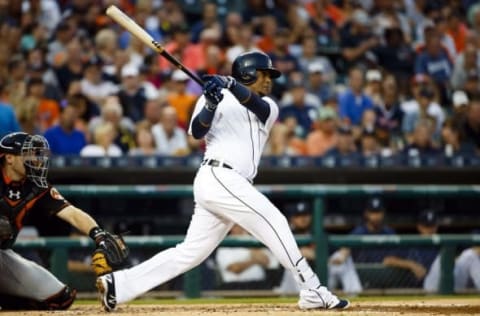
7. Erick Aybar
WAR: 0.1
OPS: .691
wRC+: 88
wOBA: .305
ISO: .100
Acquired to provide an upgrade over Aviles and McGehee, Aybar did just that as a utility infielder for the Detroit Tigers.
After coming over from Atlanta, the veteran showed glimpses of the All-Star form he flashed during his days as an everyday starter for Anaheim.
In 29 games for Detroit, Aybar posted a .341 on-base percentage. Had he marinated that number over an entire season, it would have been the second-highest mark in the category of his career. The infielder also added eight RBI, seven runs scored, five doubles and a home run. He struck out 11 times, but also drew 11 walks.
Aybar’s 88 wRC+ was higher than the combined number (74) of the two players he came into provide an upgrade over. The infielder did all this despite being hurt by a .279 BABIP.
In addition to being an upgrade over Aviles and McGehee, Aybar even out-produced regular starter Jose Iglesias in a number of categories, including ISO, wOBA and wRC+. If it weren’t for Iglesias’ elite defense, Aybar may have been the consistent starter down the stretch.
With his contract up after the World Series, it will be interesting to see if the Tigers retain him. He’d be an intriguing bench cog moving forward.
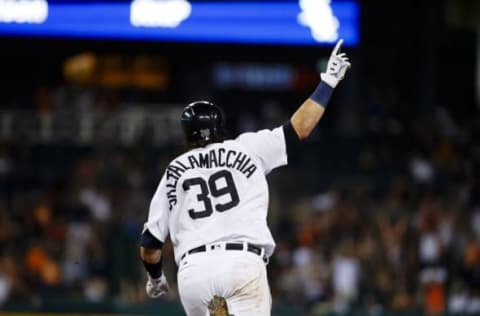
6. Jarrod Saltalamacchia
WAR: 0.1
OPS: .630
wRC+: 69
wOBA: .277
ISO: .175
On the surface, a .171 batting average and a .284 on-base percentage don’t seem like much to write home about, but Saltalamacchia provide significant value to the Detroit Tigers.
The backstop hit a number of clutch home runs while serving as an offensive option off the bench.
In April games against the Pirates and Astros, the man commonly referred to as Salty blasted go-ahead home runs in the sixth inning of each contest.
He also crushed a two-run, walk off blast against former Tiger Joakim Soria in mid-July. Saltalamacchia also went deep to tie games late against Chicago on two separate occasions down the stretch.
All told, the catcher collected 38 RBI, 30 runs scored, 12 home runs, five doubles and a triple in 92 games despite a .222 BABIP. He also threw out 24% of would-be base thieves.
In fact, in some offensive categories, Saltalamacchia actually out-produced regular starter James McCann. Salty outdid his catching counterpart where a number of statistical categories were concerned, including ISO, wOBA, wRC+ and OPS.
Just as with Aybar, the catcher is a free agent following the conclusion of the World Series. Given his clutch tendencies and his ability to be a offensive threat off the bench, it wouldn’t be a shock to see him return to the Motor City.
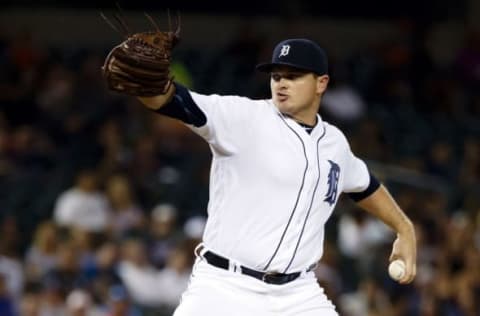
5. Justin Wilson
WAR: 1.0
WHIP: 1.33
SIERA: 3.02
K/9: 9.97
Despite giving up two controllable young arms in Luis Cessa and Chad Green, Al Avila seems to have found a long-term bullpen piece in Justin Wilson.
The former Yankee’s 4.14 ERA won’t provide too much excitement, but his 9.97 strikeouts per nine innings was one of the best rates on the team. What’s more, Wilson is controllable through 2018 and posted some excellent run prevention numbers.
His .340 BABIP, 3.24 xFIP, 3.18 FIP and 3.02 SIERA suggested that the 29-year-old is much better than his ERA would suggest.
Wilson was partly done in, at least where his ERA was concerned, by a six-game stretch in early August. During said stretch, the former Yankee was tagged for 11 hits, nine runs, four home runs and a walk in 5.1 innings pitched. He only faced 29 batters and allowed them to hit .393 off him in the span.
However, if you look at his numbers before and after the stretch, they’re extremely encouraging. Wilson’s ERA before those six games was 3.46, while batters hit just .252 against him. Following the stretch, the left-hander rebounded and pitched to a 2.51 ERA the rest of the way out, holding opposing hitters to a .226 batting average.

4. Jordan Zimmermann
WAR: 1.3
WHIP: 1.37
SIERA: 4.81
K/9: 5.64
Jordan Zimmermann did not struggle early in his first season with the Tigers—that came later. However, there is no denying that the starter was excellent in the first few months of the season.
Through June third, the former Washington National pitched to a 2.58 ERA while holding batters to a .281 on-base percentage. Zimmermann also compiled an 8-2 record while striking out 43 batters compared to just 13 walks.
Overall, his 2.2 WAR in the first half of the season was the joint-highest number on the Tigers staff.
That was the good, now for the bad.
Injuries and inconsistencies limited the starter down the stretch, as he threw just 39 innings from June 8th on. Over those 39 innings, Zimmermann allowed 55 hits and posted an unsightly 8.77 ERA.
The right-hander’s worst stretch of the season came in two starts in August and September. During the two starts, Zimmermann allowed 12 runs, 10 hits, five home runs and five walks.
Hopefully, the ex-Washington ace can turn things next season. The Detroit Tigers will need him if they want to make a push for the postseason and beyond. The 2017 rotation in Detroit will likely consist of Zimmermann, Verlander, Michael Fulmer, Daniel Norris and Matt Boyd.

3. Cameron Maybin
WAR: 1.9
OPS: .801
wRC+: 120
wOBA: .352
ISO: .103
Acquiring Cameron Maybin may go down as one of the most underrated trades in Major League Baseball for the 2016 season.
Brought back to Detroit for struggling reliever Ian Krol and minor league reliever Gabe Speier, Maybin thrived in his return to Comerica Park.
When healthy, the center fielder was a force at the top of Detroit’s batting lineup, combining with Ian Kinsler to give Detroit arguably the best pair of table setters in the league.
Among center fielders with at least 300 plate appearances, Maybin had the third-highest on-base percentage. He also finished in the top 10 in wRC+ (eighth), wOBA (ninth), and OPS (ninth).
In fact, of all players with 300 plate appearances, the former first-round pick finished with the 17th-best on-base percentage, just .002 points behind Anthony Rizzo and Kris Bryant. Only six players in the American league finished with a higher on-base percentage than Detroit’s starting center fielder.
What’s more, Maybin was Detroit’s fourth-best player where the wRC+ stat is concerned. Only Miguel Cabrera, J.D. Martinez and Ian Kinsler posted higher numbers in that category than the fleet of foot outfielder.
Hopefully the Tigers were keep him around for the long haul, as he is a significant upgrade over the team’s other center field options.

2. Justin Upton
WAR: 1.4
OPS: .775
wRC+: 105
wOBA: .329
ISO: .219
Justin Upton very well could have taken the top spot on this list. However, the Tigers simply had a greater need at the position that the top player on this list plays at.
Still, Upton had a solid first season in Detroit, despite suffering through a dreadful slump to begin the year.
From Opening Day to August 18th, the former first-overall pick was hitting just .226 with a .281 on-base percentage, 13 home runs and 46 RBI in 115 games.
Then he started destroying baseballs.
In just 38 games from August 20th through October 2nd, Upton went on a tear, mashing 18 home runs and driving in 41 runs while hitting .309 with a robust .397 on-base percentage.
Hitting 18 home runs every 38 games probably isn’t sustainable for an entire season, but the hot streak gave Tigers fans a glimpse of just what Justin Upton can bring to a baseball team from an offensive standpoint.
If he can continue his fine run of form into next season, there’s no reason to believe he can’t improve on the 31 home runs and 87 RBI he hit during the 2016 campaign.
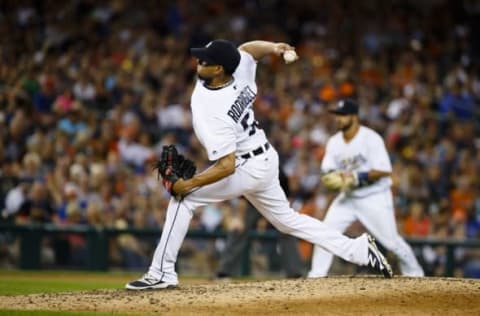
1. Francisco Rodriguez
WAR: 0.6
WHIP: 1.13
SIERA: 3.66
K/9: 8.02
It may seem odd to rank a player with a 0.6 WAR as Avila’s top acquisition from 2016, but the Tigers desperately needed a closer.
During the 2014 and 2015 seasons, Detroit relied on Joe Nathan and Joakim Soria respectively as the team’s closers. Nathan pitched to a 4.81 ERA in 58 innings while Soria’s FIP was an unsightly 4.87.
In other words, the Tigers really needed Francisco Rodriguez to lock things down in the ninth inning—and lock things down he did.
Over 58.1 innings, the veteran recorded 44 saves while striking out 8.02 batters per nine innings. Despite not being the flamethrower he once was, Rodriguez was generally brilliantly effective for the Tigers. For the first time in years, there was a growing sense of calm when Detroit’s closer entered the ballgame.
Acquired for a prospect in Javier Betancourt who was blocked by as many as five different players on the organizational depth chart, the trade was an obvious win for Al Avila and the Detroit Tigers.
Hopefully, Rodriguez will return next season to give Detroit a chance at postseason baseball. Detroit’s bullpen was solidified with the addition of the closer, and it could be even more effective if the team adds another late-inning arm.
The idea of a Francisco Rodriguez/Kenley Jansen two-headed monster is particularly intriguing.
Next: Should the Tigers Sign Kenley Jansen?
All in all, Rodriguez was Avila’s best acquisition of the last year. Upton and Maybin made it close, but Detroit had a need at the back end of the bullpen—a need the man known as K-Rod filled.